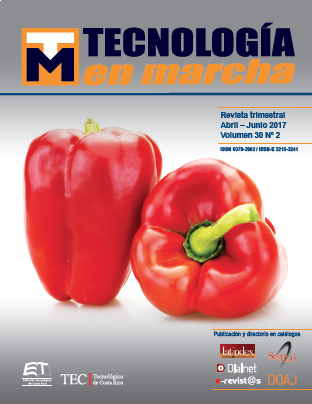Psr indicator for forest fire and network sensors for early detection of forest fires in Costa Rica
Main Article Content
Abstract
A forest fire is a fire that expands without any control in a forest region. In Costa Rica, between 1998 and 2006 the forest fires have affected 35428 ha, and in 2007 at least 2468 ha, according to information from CONIFOR (MINAET) [1]. As an immediate effect, this situation contributes to the disappearance of the forest. This reality, in addition to other activities, such as logging and hunting, demand collaboration for the control of these attacks to the forest. Current electronic technologies, applied to environmental protection, offer possible solutions, particularly the use of wireless sensor networks (WSN) for Early Detection of Forest Fires (EDFF). Even though these have not been fully exploited in Costa Rica, there are currently research and development activities aiming at the use of such networks in forest protection.
The advance preparation, or the reaction that a country or region has for facing various problems or environmental disasters affecting sustainable development, can be manifested through indicators PSR (Pressure-State-Response) OECD (Organization for Economic Co-operation and Development), and in the case of wildfire the FFPI indicator (Forest Fire Pressure Index) that relates the forest area burned with the forest area that has not been affected. That means the effect of these fires is reflected in the respective environmental indicators.
Article Details
Los autores conservan los derechos de autor y ceden a la revista el derecho de la primera publicación y pueda editarlo, reproducirlo, distribuirlo, exhibirlo y comunicarlo en el país y en el extranjero mediante medios impresos y electrónicos. Asimismo, asumen el compromiso sobre cualquier litigio o reclamación relacionada con derechos de propiedad intelectual, exonerando de responsabilidad a la Editorial Tecnológica de Costa Rica. Además, se establece que los autores pueden realizar otros acuerdos contractuales independientes y adicionales para la distribución no exclusiva de la versión del artículo publicado en esta revista (p. ej., incluirlo en un repositorio institucional o publicarlo en un libro) siempre que indiquen claramente que el trabajo se publicó por primera vez en esta revista.

